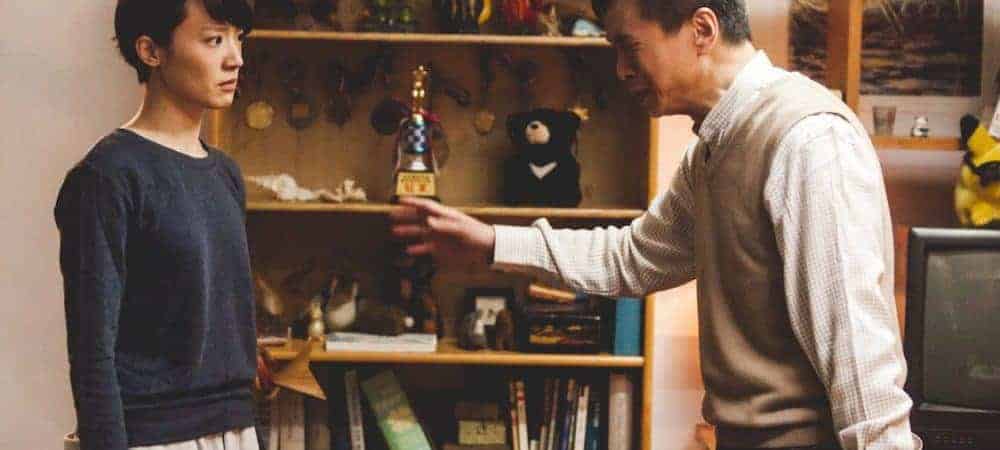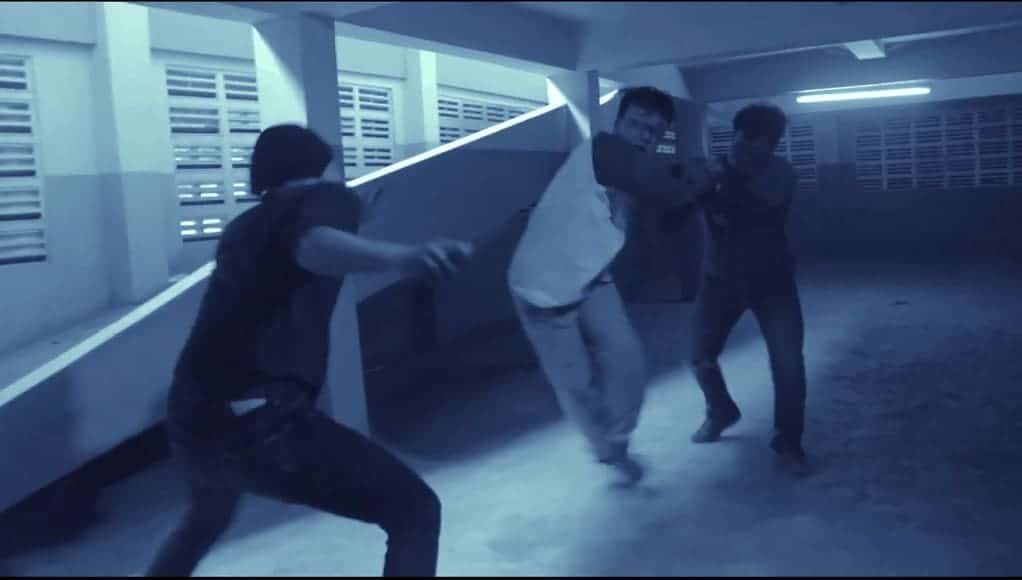Sion Sono had one of his most prolific years in 2015, eventually managing to shoot six films, including this particular one that stands apart due to its minimalism, a concept almost unknown to one of the most maximalist filmmakers of the world.
“The Whispering Star” screened at Art Film Fest Kosice
80% of the universe is populated by androids. The few humans left have chosen to live in silence, enforcing a law that forbids any sound over 30db. A female humanoid robot named Yoko lives in a spaceship shaped like a traditional Japanese house, while delivering packages to humans all over the galaxy. In the vast intervals between the deliveries, Yoko cleans and makes tea, in one of Sono's favorite practices, who seems to relish shooting his real-life wife (Megumi Kagurazaka who plays Yoko) doing domestic chores. Her sole company is a robot attached to the spaceship's control panel, who seems to have a character of its own.
However, she eventually resorts to playing an old tape recording that entails a diary filled with remarks and enquiries regarding human nature, likely recorded by her predecessor, a same-model humanoid. One of the central inquiries of the film is why people continue sending various objects to each other, although they are not essential to their survival. With that question in mind, Yoko becomes curious about the parcels she is carrying and ends up reluctantly opening one of them. In her deliveries, among others, she meets an old man with a can stuck in his shoe, an old woman selling cigarettes, and the shadows of a bunch of people.
Sono directs a film whose central theme is nostalgia, a notion that becomes evident from the beginning, through the anachronistic setting inside the spaceship. Furthermore, he used one of his recent favorite practices; shooting the alien landscapes in evacuated zones in Fukushima that, through the effects of nuclear energy, actually appear outlandishly desolate. The same applies to the cast, which is comprised of people who still live in the temporary housing units, due to the nuclear disaster in Namie, Tomioka and Minami Soma, Fukushima.
Additionally, he incorporated a number of notions regarding humanity, chiefly represented through Yoko, who slowly realizes that she is as much human as she is an android. Lastly, there is a subtle sense of humor, exemplified in the scene where Yoko makes a blunder and the robot laughs.
The wonderful black-and-white cinematography of Hideo Yamamoto and the sublime lighting are probably the film's best technical aspects. Both are exemplified in a scene during the end, where Yoko walks in a corridor filled with human shadows from both sides. Another great scene is the only one where color appears in the film, which also highlights Junichi Ito's editing. Furthermore, the fact that everyone whispers in the film also shows the work done in the sound department, in an unusual notion that makes the film quite eerie. The moment the old man decides to keep the can in his shoe just to hear a sound in this desolate universe is another great one.
Megumi Kagurazaka is the sole protagonist of the film, and gives a performance that perfectly fits the aesthetics of the movie, with its distinct minimalism. Occasionally, she seems as if she is acting in a theatre play, a sense heightened by the fact that the movie is presented in acts, with each one responding to a day. Sono focused much on her beautiful hands and impeccable manicure, which feature in many scenes, to a great aesthetic result.
“Whispering Star” is a unique entry in Sion Sono's filmography, and a film relatively difficult to watch, due to its minimalism and slow pace. However, it is a very beautiful and meaningful movie, which is bound to stay in memory due to its uniqueness.



















